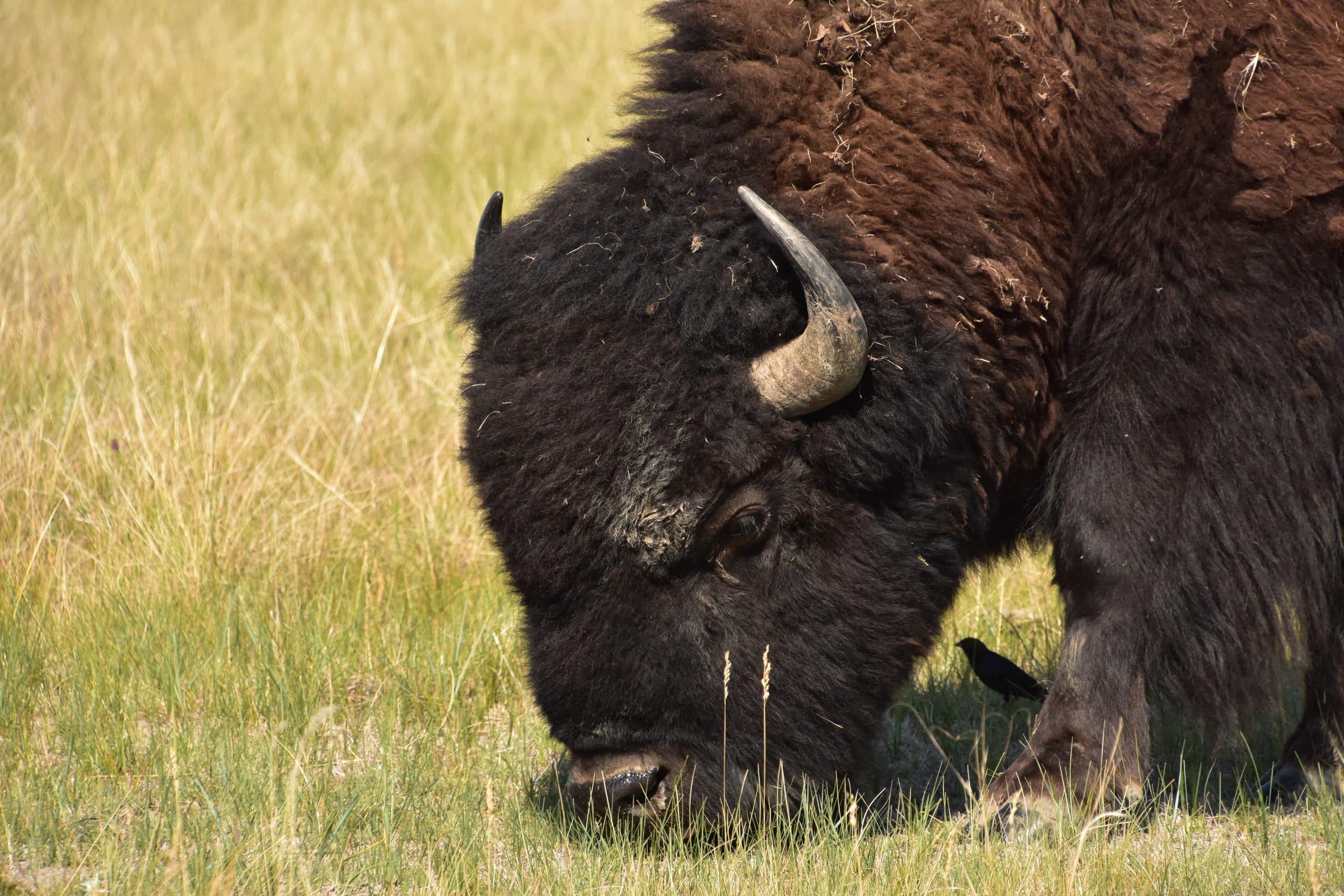One of the most unique attractions in southwest Kansas is the Sandsage Bison Range, located just south of Garden City on Business US 83. This 3670-acre nature preserve is home to more than 100 American Bison that roam the open plains just as they have for thousands of years. The preserve offers tours for interested visitors who wish to get a closer look at these fascinating animals.
If you plan on heading over to the Sandsage Bison Range, it helps to have some idea of what these creatures are all about. This three-part blog series will help get you up to speed about American Bison, so you can get the most out of your experience at the range.
Bison Basics
Here in part one of this series, we’ll get a basic understanding of what this animal is all about. In part two we will go into more detail about bison behavior, and in part three, we’ll look at the role bison play in America today.
Bison History
The American Bison is a nomadic herd animal exclusive to North America and has been an important part of the American story. In the past, this majestic animal roamed wild and free over most of the continent, from Mexico to Canada.
Bison are remarkable animals and can provide a wide variety of resources to humans. Traditionally, Plains Indians depended almost entirely on bison for their survival, using nearly every part of the animal to support their way of life.
However, the arrival of European settlers to the Americas significantly impacted bison populations throughout the continent. By the end of the 19th century, bison had been hunted nearly to extinction both for economic gain and as part of government efforts to destabilize Indian populations.
Despite this, bison numbers have rebounded over the last 100 years due to conservation efforts as well as the development of bison as livestock. Today, most bison live as captive livestock or in isolated protected herds such as at Sandsage Bison Range.
Bison Are Not Buffalo
It’s normal to hear the American Bison referred to as a “buffalo,” but in fact, American Bison are only distant cousins of the True Buffalo that live in Africa, South Asia, and Southeast Asia. Bison are more closely related to cows than buffalos.
American Bison were first referred to as buffalo by French explorers who misnamed the animal based on previous experiences with their Asian and African cousins. Due to a long history of standard usage, buffalo is an accepted name for the animal, even if it’s not technically correct.
Bison Biology
The American Bison is the largest land animal in North America, growing up to 6.5 feet tall and 12.5 feet long. As with most mammals, male bison tend to be bigger and heavier than their female counterparts.
Wild bison have been estimated to weigh up to 3000 pounds, while some captive bison have tipped the scales at over 3800 pounds. Despite this enormous size, bison can run at speeds of up to 45 mph – so be sure to keep your distance!
One of the first features you will notice when you look at a bison is its horns. These frightening protrusions can grow up to two feet in length and, unlike cows, both male and female bison are horned. These horns can be deadly, so always exercise caution around these animals.
Another striking feature of bison biology is the large hump positioned above the shoulders. This hump is made of muscle and is useful for plowing through snow, other bison, or whatever unlucky creature decides to get in the way.
Bison also have a thick wooly coat that keeps the animal warm during the brutal winters of North America. Due to their remarkable insulating properties, these coats have been prized by hunters for centuries. Bison shed most of the coat in the summer to stay cool.
Bison Diet
As nomadic herd animals, bison graze on a wide variety of grasses, sedges, and other plants. While it may seem like bison wander aimlessly in search of food, there is actually some method to their madness.
Based on instinct, bison roam to areas with different plants that can provide a variety of protein and other nutrients to round out their diet. When they have their fill of one type of plant, they will set off in search of others to fill their various dietary needs.
Bison are also ruminants, which means they have a special stomach where they can ferment food before digesting it. They can then regurgitate the food, chew it some more, then swallow it again. If you spot a bison (or cow) that seems to chew endlessly, this is what they are doing.
While it might sound gross, this process of “chewing the cud” allows ruminants to consume a wider variety of plants – and to get more nutrients from plants – than other animals could.
Conclusion
Now, you have some basic knowledge and facts about the American Bison, which should give you a headstart if you plan on checking out Sandsage Bison Range. Stay tuned for parts two and three where we will go into more detail about these animals.
If you’re planning a trip to Garden City, feel free to check out the rest of our site for other great attractions and accommodation available in our city.


